What Is a No Ball in Cricket? Full Expert Guide
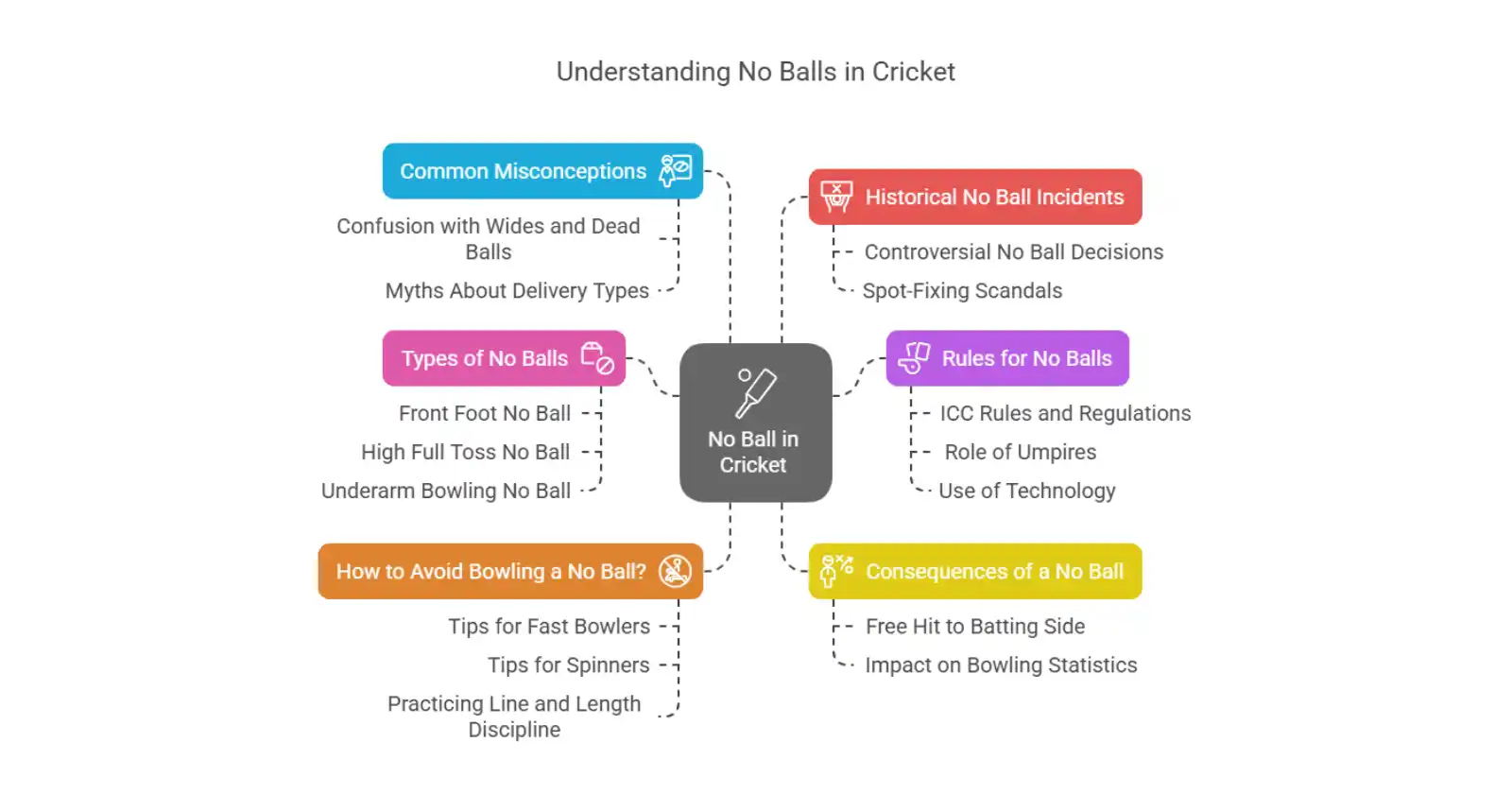
What is a no ball in cricket? As someone who loves to discuss cricket talks. From foot faults to flying full tosses, let’s get into this cricket classic, shall we?
What is a No Ball?
A no ball in cricket is an illegal delivery by the bowler. It can happen for many reasons:
- Overstepping the line,
- Dangerous deliveries or
- Even weird bowling actions.
And yes, every no ball has a bonus, A free hit.
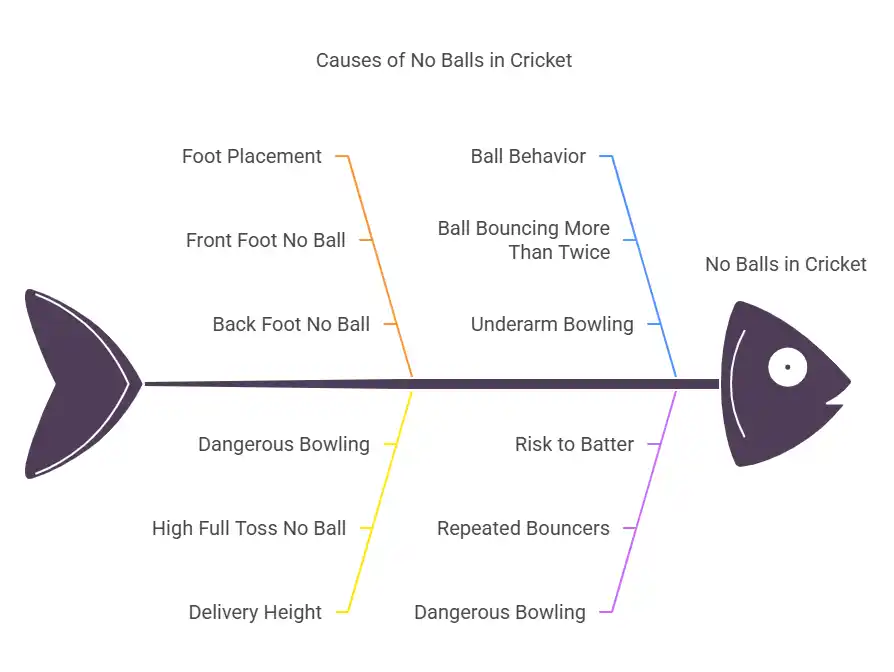
Types of No Balls in Cricket
Let’s look at the most common types of no balls in cricket.
Front Foot No Ball
This is the classic one. If the bowler’s front foot lands beyond the popping crease while delivering the ball, bingo, it’s a no ball. It’s usually picked up by the third umpire these days.
High Full Toss No Ball
If a bowler delivers a full toss (a ball that doesn’t bounce) above the batsman’s waist, that’s a no ball. It’s dangerous.
Overstepping the Crease
This is often confused with the front foot no ball, but there’s also something called back foot no ball (rare today).
Underarm Bowling No Ball
Remember that Australia vs New Zealand match? Underarm bowling is now banned in official cricket. If a bowler tries this cheeky move, it’s an automatic no ball.
Ball Bouncing More Than Twice
If the ball bounces more than twice before reaching the batter, it’s a no ball. This often happens when a bowler loses grip or control. Whatever the reason, it’s illegal and very embarrassing.
No Ball for Dangerous Bowling
Repeated bouncers targeted at the batter’s head, can be ruled as dangerous. If the umpire feels the delivery puts the batter at serious risk, it’s called a no ball. And yes, fast bowlers hate this rule.
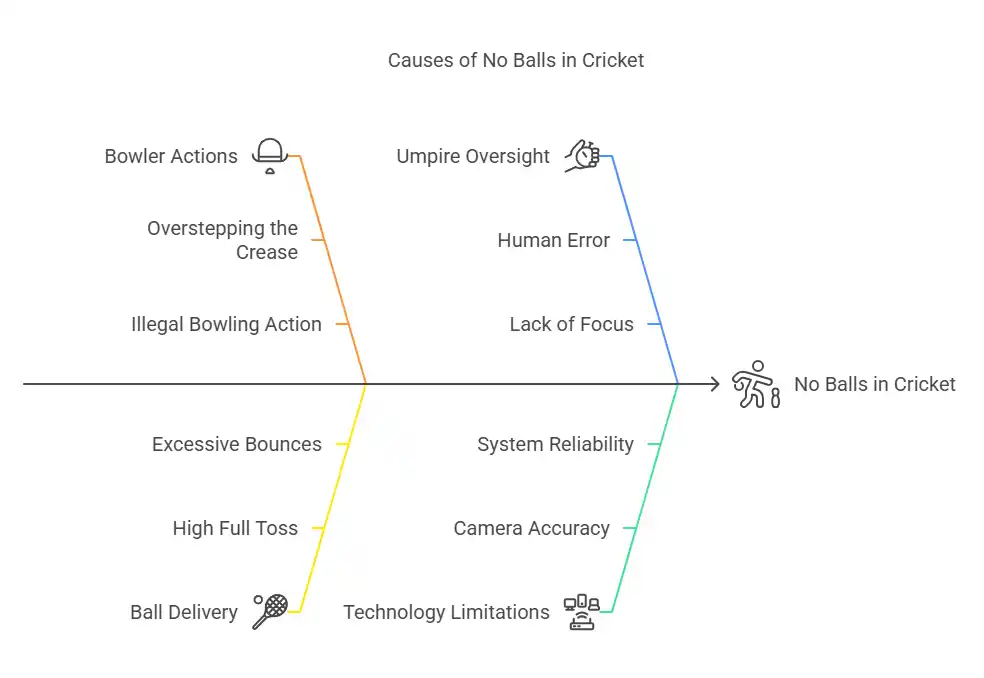
Rules For No Balls
Cricket isn’t just a bat-and-ball game. And when it comes to no balls, the International Cricket Council (ICC) has clear rules to keep things fair.
ICC Rules and Regulations
According to ICC’s rulebook, a delivery is called a no ball if it violates any of the following:
- The bowler oversteps the crease (front foot).
- The ball bounces more than twice before reaching the batter.
- It’s a high full toss above waist height.
- There’s dangerous or unfair bowling.
- Illegal bowling action (chucking, underarm).
Every no ball costs the bowling team a run and gives the batter a free hit.
Role of Umpires in Calling No Balls
Field umpires are cricket’s gatekeepers and call no balls by following the rule. But with fast bowlers sprinting it’s hard to catch and maybe he misses that.
So now, they get some high-tech backup. Or otherwise there we saw the third umpire.
Use of Technology (Third Umpire & Front Foot Detection)
Front foot no balls are now automatically monitored by the third umpire in many international matches. Cameras track the bowler’s foot in real time, and if it lands past the line, the third umpire presses the buzzer.
This tech helps:
- Avoid umpire error.
- Keep the game fair.
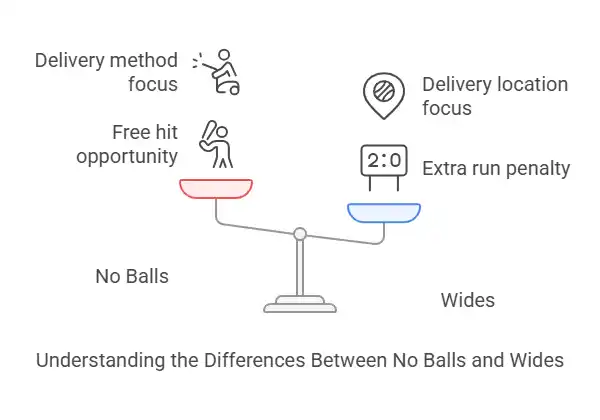
Consequences of a No Ball
Bowling a no ball isn’t just a small slip-up, it can flip the game like a coin at the toss.
Free Hit to the Batting Side
Every no ball (except some technical ones like fielding restrictions) gets a free hit to the batter. That means they cannot be dismissed by most outing rules, only run out is allowed.
Impact on Bowling Statistics
No ball isn’t only a run also the next ball is a free hit (more punishment).
In close matches, a single no ball can haunt a bowler for years (just ask Ben Stokes or Jasprit Bumrah).
Common Misconceptions About No Balls
You’d think a no ball would be simple, step over the line, get penalized. Let’s clear the thing on what a no ball isn’t, and what people think it is.
Confusion with Wides and Dead Balls
Wides and no balls get mixed up like sugar and salt. Both are illegal deliveries but they’re very different:
A wide is too far from the batter to hit, usually down leg side or way outside off. A no ball is about how the delivery is bowled, not where.
Dead balls, on the other hand, are when the game is stopped or something stops the delivery. A no ball is a blessing, especially when it turns into a free hit.
Myths About Delivery Types
Some folks think:
- A beamer is always intentional (it’s often not).
- A bouncer is a no ball by default (nope, only if it’s above the head).
- Bowling with a weird action is automatically illegal (only if it breaches the ICC’s 15-degree arm rule).
Cricket has rules but it also has lots of grey areas.
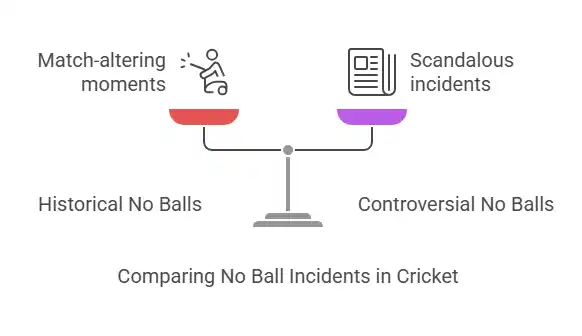
Historical No Ball Incidents
2016 World T20 Final, Remember when Ben Stokes bowled that full toss no ball to Carlos Brathwaite?
2018 India vs West Indies, Umpire missed a no ball that would’ve given India a free hit. Twitter exploded faster than Kohli’s cover drives.
2007 World Cup Final, Yes, they continued playing even though it was officially over.
Controversial No Ball Decisions
Sri Lanka vs Australia, 2001, Muttiah Muralitharan was called for seven no balls in a row. Fans were furious.
Pakistan vs England, 2010, The spot-fixing scandal. Bowlers overstepped to deliver no balls on cue.
No balls aren’t just rule breaks, they’re match changers or even headlines.
How to Avoid Bowling a No Ball?
Every bowler has done it. But fear not, avoiding a no ball isn’t rocket science. It’s just about being smart and yes, a little boring.
Tips for Fast Bowlers
Fast bowlers are the suspects when it comes to no balls.
- Mark your run-up accurately. Use tape or even a spot on the grass. If your run-up’s off, everything else goes south.
- Practice full run-up deliveries.
- Watch your front foot in slow-mo. A little video review goes a long way.
- Stay relaxed. Overstriding often happens when you’re too hyped up trying to bowl 150+ kph.
Tips for Spinners
Spinners bowl fewer no balls. Avoid these:
- Don’t rush your delivery. Spinners sometimes “hurry” to out the batter.
- Keep your bowling action tight. Any weird arm angle could be flagged for chucking and that’s a no ball.
- Stay within the crease. Even a lazy overstep can turn into a no ball.
Practicing Line and Length Discipline
This is for everyone, Use cones, chalk or even shoes at the popping crease. Mental discipline matters. A legal delivery might not always get you a wicket but an illegal one could lose you the match. Choose wisely.
At The End
So, next time someone asks, “What is a no ball in cricket?” or you see a free hit changing the game remember it’s a strategy or slip-ups. Cricket never runs out of gossip and no balls? see our more blogs about cricket.
